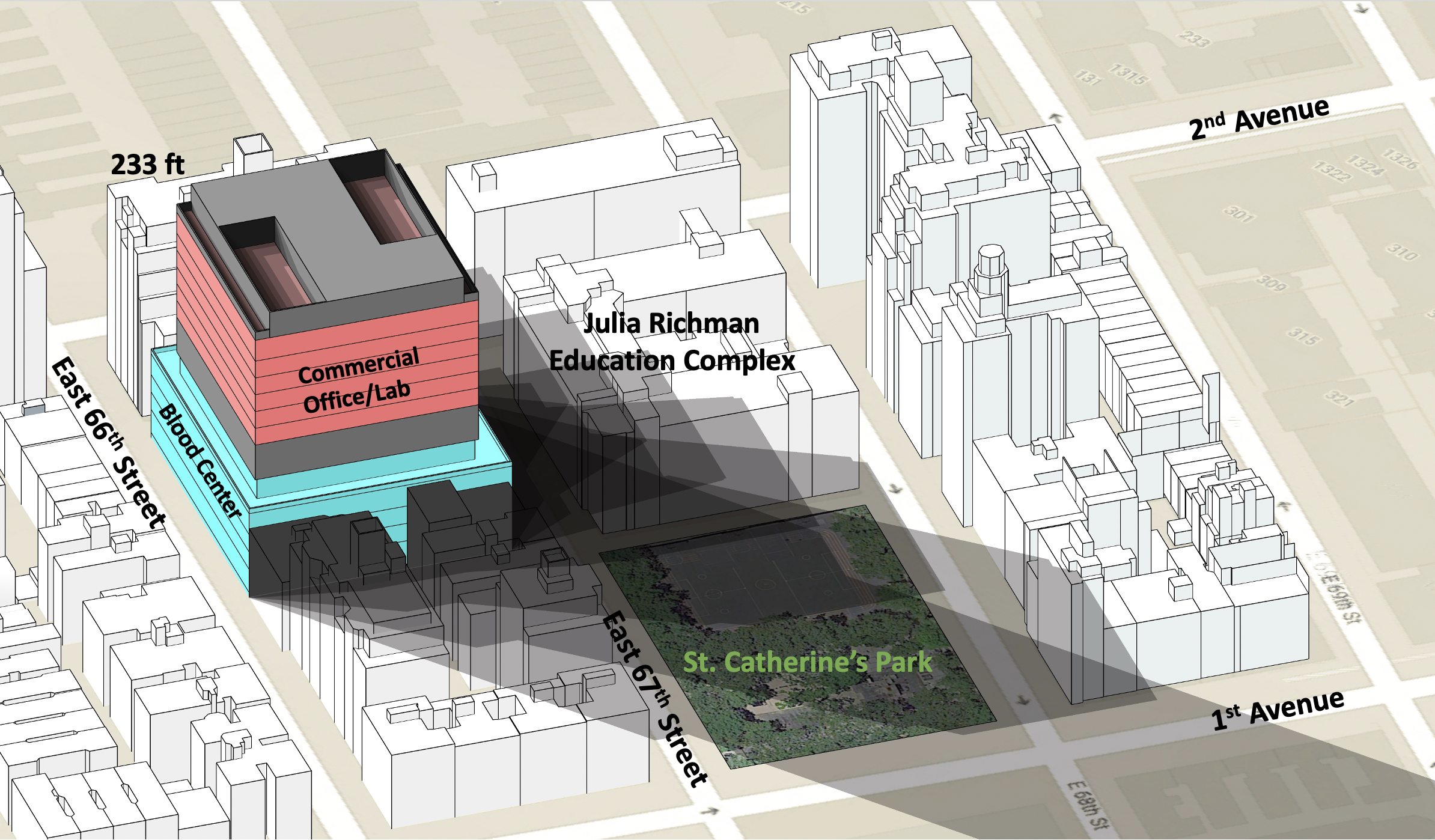New details today in the Blood Center/Longfellow tower project reveal what an economist at the New School has called a “really sketchy deal.” As reported by the New York Daily News, a letter to City Council Speaker Corey Johnson from the Mayor’s Director of Legislative Affairs makes clear that the city’s Industrial Development Agency plans to provide $100 million in tax breaks to Longfellow under the development deal. A New York Times analysis says those incentives could exceed $450 million over 25 years, a massive level of subsidy typically only seen for the largest developments in New York, like Hudson Yards.
According to James Parrot, the economist who reviewed the proposed tax incentives for the New York Times, the deal “would be one of the largest of its kind in city history.” As Parrot says, “It’s a tradition that has been widely questioned in the past and will continue to be… This looks like a really sketchy deal providing a hugely costly subsidy for a very uncertain result.”
The de Blasio administration letter also details the sources of the large pay-outs promised to “mitigate” open space and shadow impacts. While the NYBC will contribute $3.6 million to St. Catherine’s Park, the City itself has committed an additional $7 million for park renovations plus $2 million for technology upgrades like laptops and smart boards at the Julia Richman Education Campus.
All of this to support an institution that could build MORE space for itself as-of-right or one of the community-supported alternatives. Details released about the 233’ “compromise” show that the one losing here is the Blood Center, which will now have less space than it currently occupies in the existing building, while Longfellow has given up nothing and stands to receive a windfall for its deal.
As Council Member Ben Kallos suggests in the NYT, “At the end of the day, this is about an 16-story tower that is somehow 233 feet tall that is a glorified office space for wealthy people.” Is this the kind of project – one that introduces commercial uses to a residential block for the first time and overturns a generation of sound planning principles – worth $450 million in city subsidy, over $10 million to “mitigate” impacts on local resources, and throwing out the longstanding practice of deferring to the local representative in land use decisions? The answer is a clear NO.
FRIENDS urges the Council Members and politicians who have come out in support of the project to rethink their positions in light of these new details.


